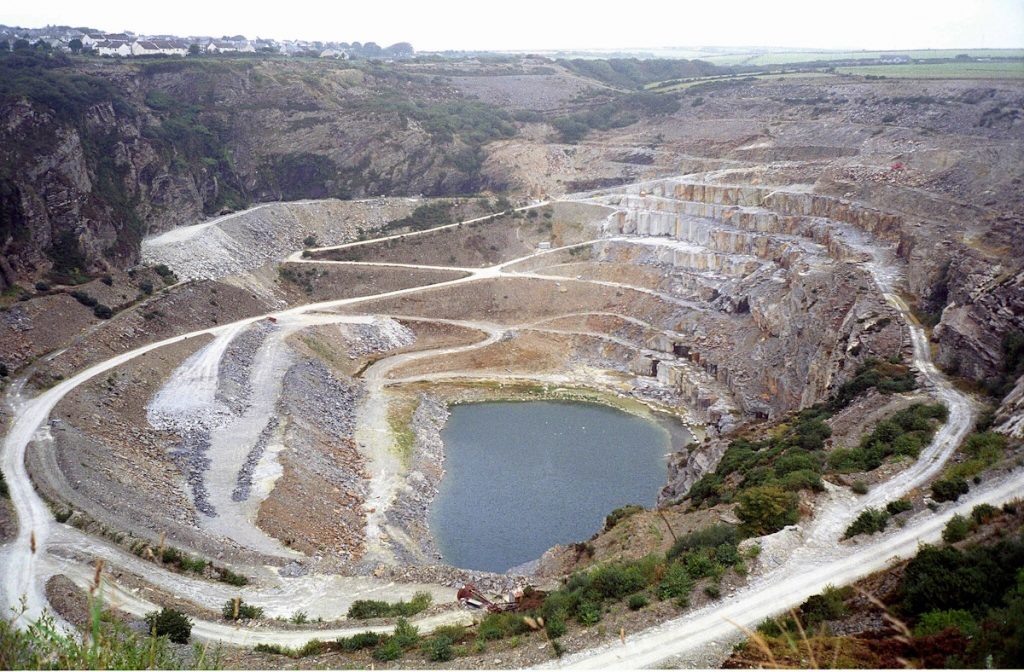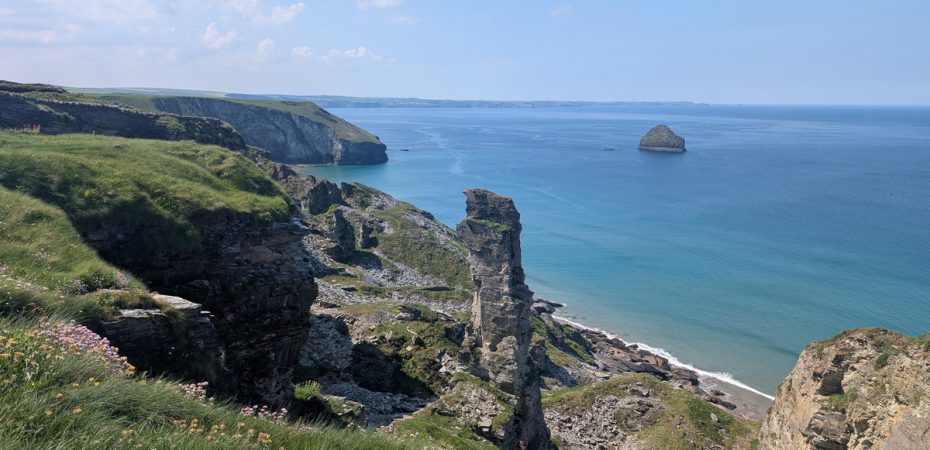
The slate industry in North Cornwall has played a vital role in shaping both the landscape and the heritage of the region, particularly along the South West Coast Path, where dramatic cliffs bear the scars of centuries of quarrying. While it never reached the scale of the Welsh slate industry, Cornish slate — especially from the Delabole area — was prized for its quality, durability, and fine-grained finish.
Slate has been quarried in Cornwall since at least the 15th century, though there is evidence of earlier small-scale use in medieval times. The industry grew significantly from the 18th century onward, driven by the demand for roofing materials across the West Country and further afield. Cornish slate was especially valued for its blue-grey colour, thin cleaving properties, and weather resistance.
Main Quarrying Sites Along the Coast
Many of North Cornwall’s slate quarries were dug directly into the cliffs, creating the steep, gouged faces and terraced platforms still visible today — especially to walkers on the South West Coast Path. Notable sites include:
- Trebarwith Valley and Cliffs: South of Tintagel, these cliffs are littered with remnants of small-scale cliff-edge quarries. Old slate platforms, crumbling engine houses, and inclined tracks still cling to the steep faces.
- Tregardock Cliff: Above Tregardock Beach, the ruins of quarry buildings remain visible along the coast path. This stretch shows how workers hewed stone directly from the cliffs, often in dangerous conditions, and loaded it onto donkey carts or boats below.
- Backways Cove and Treligga: More secluded quarries operated here, with much of the slate shipped by sea or dragged by cart inland. You’ll often find angular spoil heaps, old winch platforms, and collapsed shelters along the path.
- Tintagel: Though better known for legends, Tintagel was also the site of some slate activity, particularly around Dunderhole Point, where the terrain shows quarrying scars.
These quarry sites often doubled as smuggling spots, with their isolated locations, hidden coves, and caves offering ideal cover for illicit trade.
Delabole: The Heart of Cornish Slate
The Delabole Slate Quarry (also known as the Old Delabole Quarry) is the most famous and historically significant slate site in Cornwall. Located a few miles inland from Trebarwith and Tintagel, it is said to be the oldest working slate quarry in England, with continuous operations dating back over 600 years. At its peak, it was over 500 feet deep, and more than 1.5 miles long, making it one of the largest man-made excavations in Europe. It remains active today and is still one of Europe’s largest hand-dug holes
Delabole slate was transported by horse-drawn wagons to the coast, or later via railway, and used in everything from roof tiles to memorials and flooring. The quarry is still active today, now operated on a smaller scale with a focus on high-quality traditional materials.
Delabole village itself grew around the quarry and retains much of its industrial heritage. Workers’ cottages, chapels, and tool sheds give a glimpse into the lives of generations of slate workers.
Legacy and Landscape
Today, the slate industry has largely declined, but its legacy is etched into the cliffs, paths, and buildings of North Cornwall. As you walk the coast path, particularly between Tintagel and Port Isaac, you pass silent quarries, overgrown spoil tips, and stone walls built from the very material once quarried here. The landscape is a living museum of the industry — rugged, beautiful, and steeped in hard-earned history.
Slate Quarry Highlights: Tintagel to Port Isaac
| Name / Area | Location | What to Look For |
|---|---|---|
| Dunderhole Point | Just south of Tintagel Castle | Quarry scars in the cliff face, platforms, and chutes once used for slate removal |
| Trebarwith Cliffs | Above Trebarwith Strand | Terraced cliff quarries, ruins of old machinery, and access tracks |
| Backways Cove | South of Tregardock | Steep quarry walls and collapsed slate shelters near a remote cove |
| Tregardock Quarry | Above Tregardock Beach | Heavily quarried cliff with remnants of winching gear and buildings |
| Treligga Cliff Quarries | Between Tregardock and Port Quin | Spoil heaps, cutting platforms, and overgrown quarry pits along the path |
| Polventon Cliff | Inland from Port Quin Bay | Isolated quarry scars visible from the path; views of former slate-loading areas |
| Grower Quarry (ruins) | Near Treligga, ~1km inland from coast | Not directly on the path but visible ruins and earthworks in the nearby fields |
| California Quarry | Near Grower Quarry | Inland quarry with visible waste mounds and old cart paths leading toward the coast |
How to Use While Walking:
- Look for angular cuts in the cliff faces and unnatural terraces.
- Old wooden platforms, rusted iron fixings, and worn stonework often signal quarry activity.
- Many platforms offer great spots for rest and coastal photos — just stay well clear of edges.
This article was originally generated by ChatGPT
